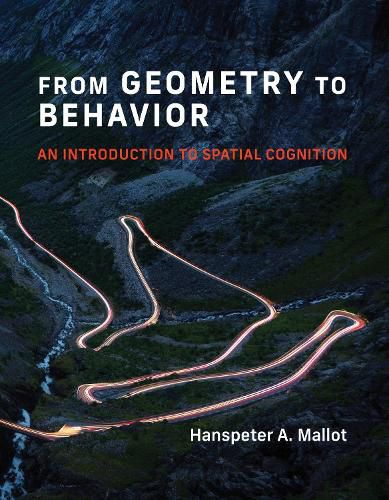From Geometry to Behavior
Hanspeter A. Mallot

From Geometry to Behavior
Hanspeter A. Mallot
An overview of the mechanisms and evolution of spatial cognition, integrating evidence from psychology, neuroscience, cognitive science, and computational geometry.
An overview of the mechanisms and evolution of spatial cognition, integrating evidence from psychology, neuroscience, cognitive science, and computational geometry.
Understanding how we deal with space requires input from many fields, including ethology, neuroscience, psychology, cognitive science, linguistics, geography, and spatial information theory. In From Geometry to Behavior, cognitive neuroscientist Hanspeter A. Mallot provides an overview of the basic mechanisms of spatial behavior in animals and humans, showing how they combine to support higher-level performance. Mallot explores the biological mechanisms of dealing with space, from the perception of visual space to the constructions of large space representations- that is, the cognitive map. The volume is also relevant to the epistemology of spatial knowledge in the philosophy of mind.
Mallot aims to establish spatial cognition as a scientific field in its own right. His general approach is psychophysical, in that it focuses on quantitative descriptions of behavioral performance and their real-world determinants, thus connecting to the work of theorists in computational neuroscience, robotics, and computational geometry. After an overview of scientific thinking about space, Mallot covers spatial behavior and its underlying mechanisms in the order of increasing memory involvement. He describes the cognitive processes that underlie advanced spatial behaviors such as directed search, wayfinding, spatial planning, spatial reasoning, object building and manipulation, and communication about space. These mechanisms are part of the larger cognitive apparatus that also serves visual and object cognition; understanding events, actions, and causality; and social cognition, which includes language. Of all of these cognitive domains, spatial cognition most likely occurred first in the course of evolution and is the most widespread throughout the animal kingdom.
This item is not currently in-stock. It can be ordered online and is expected to ship in approx 2 weeks
Our stock data is updated periodically, and availability may change throughout the day for in-demand items. Please call the relevant shop for the most current stock information. Prices are subject to change without notice.
Sign in or become a Readings Member to add this title to a wishlist.


